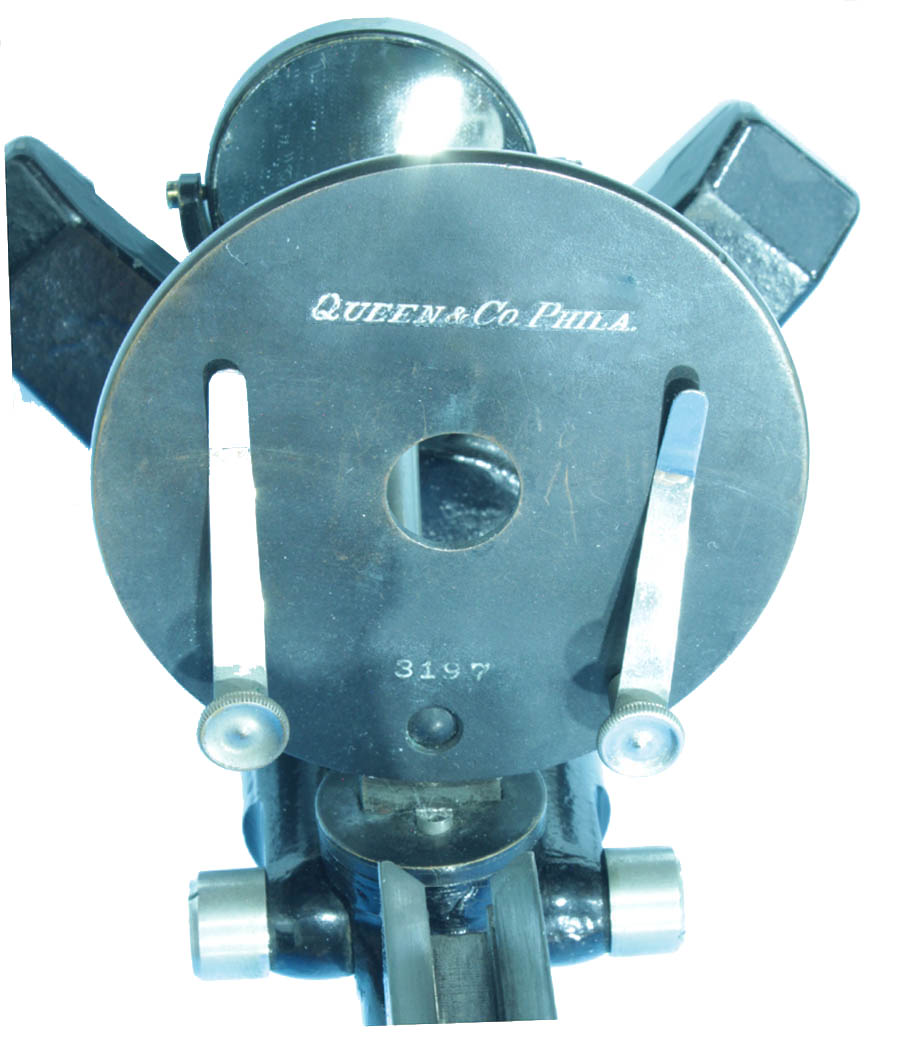Queen & Co. Phila
| DESCRIPTION | HISTORY | CONDITION |
Please Click On Any Picture for a Larger Version

QUEEN&CO. PHILA., 3197. It features a round stage with with stage clips. There is diagonal rack and pinion coarse focusing but no fine focusing and no substage. There is a nickel-plated draw tube. The swinging substage mirror can provide normal illumination, swing to the side for oblique illumination, or swing above the stage for top lighting for opaque subjects. It comes with its original hardwood case with handle.
ACME No. 6SOLD BY QUEEN
Librarymodel (sold from 1886-1896). The first version of the Library model had a Gundlach style foot with straight-toothed rack and pinion. The second version (1886-96) had a simpler foot as seen on the microscope featured above on this page. The second version initally had a straight-toothed rack and pinion, but later examples had the diagonal-toothed rack and pinion found on the Acme No. 6. A version of the earlier iteration of the second version of the Libary microscope with straight-toothed rack and pinIon, but sold by McAllister is in this collection. In addition to having a straight-toothed rack and pinion, the McAllister, has, like the first version of the B & L, and also the first iteration of the second version of the B & L, a French button objectives, and a smaller diameter single convex mirror. The two microscopes have identical feet and uprights. The limb is slightly thicker on the Queen, which also has a larger diameter mirror which was originally two sided, flat on one side and concave on the other. The knurling of the knob is slightly different on each. Furthermore, the draw tube on the Queen Acme No. 6 extends beyond its knurled lip, whereas the McAllister draw tube ends at that lip. Lastly, the slide for the rack is longer on the Queen Acme No. 6, but shorter on both the McAllister and the older Bausch & Lombs. Both the McAllister and the Acme No. 6 are the same height in working configuration.